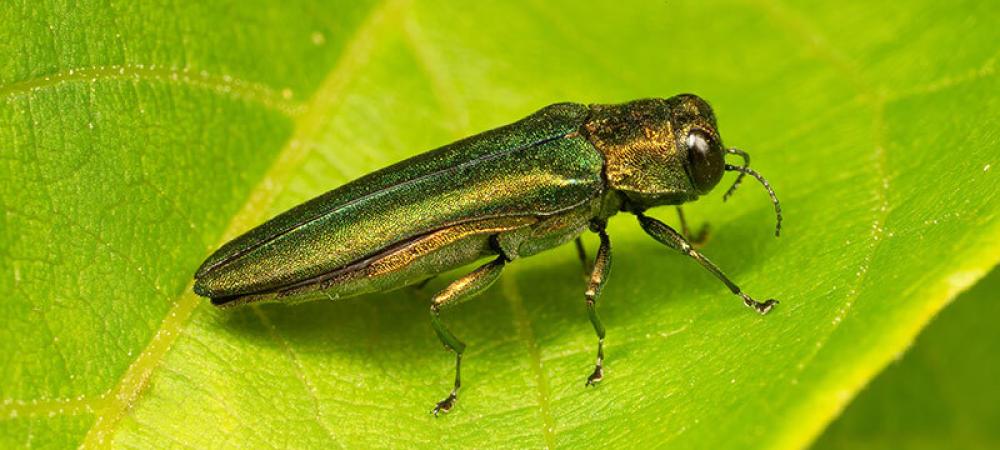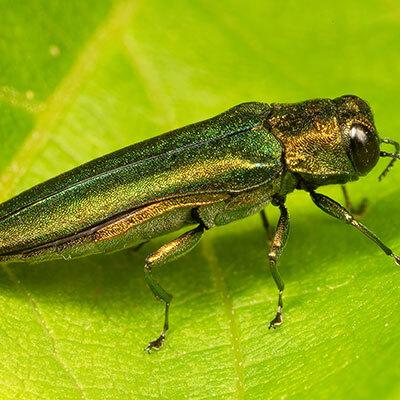Emerald Ash Borer Guide and Resources

The Emerald Ash Borer (EAB) is a pesky insect that has terrorized property owners throughout Illinois. First discovered in the United States in 2002 and in Illinois in 2006, EAB is an invasive species that attacks ash trees throughout the United States.
Adult EAB beetles lay eggs in the bark of the tree. As the larvae grows, it eats through vital transportation tissue in the ash tree’s trunk, which limits the movement of water and essential nutrients in the tree, causing it to die. Tens of millions of ash trees have died throughout the United States, and cases of EAB have been discovered in every county in Illinois. Government regulations have minimized the spread of EAB across state lines, while professional arborists can protect trees from EAB before they are affected.
In this guide, you will find links to helpful websites and resources — from basic guides to government resources — about the EAB problem both here in Illinois and throughout the United States. Links marked with this icon are PDFs or other documents.

Basic Information about EAB
- Chicago Botanic Garden on EAB
- Threat & Impact of this Hungry Pest
- Ultimate Guide on EAB
- What does EAB look like? U.S. Forest Service
- Guide to Identifying Ash Trees and EAB Damage (USDA | Wisconsin Dept. of Agriculture)
Government Resources on EAB
- U.S. Dept of Agriculture’s Animal and Plant Health Inspection Service – EAB
- U.S. Dept. of Agriculture’s Emerald Ash Borer: The Green Menace
Emerald Ash Borer in Illinois
EAB Across the United States
- 2016 National Counties Map of EAB Detections
- When will EAB arrive this year? See this map.

